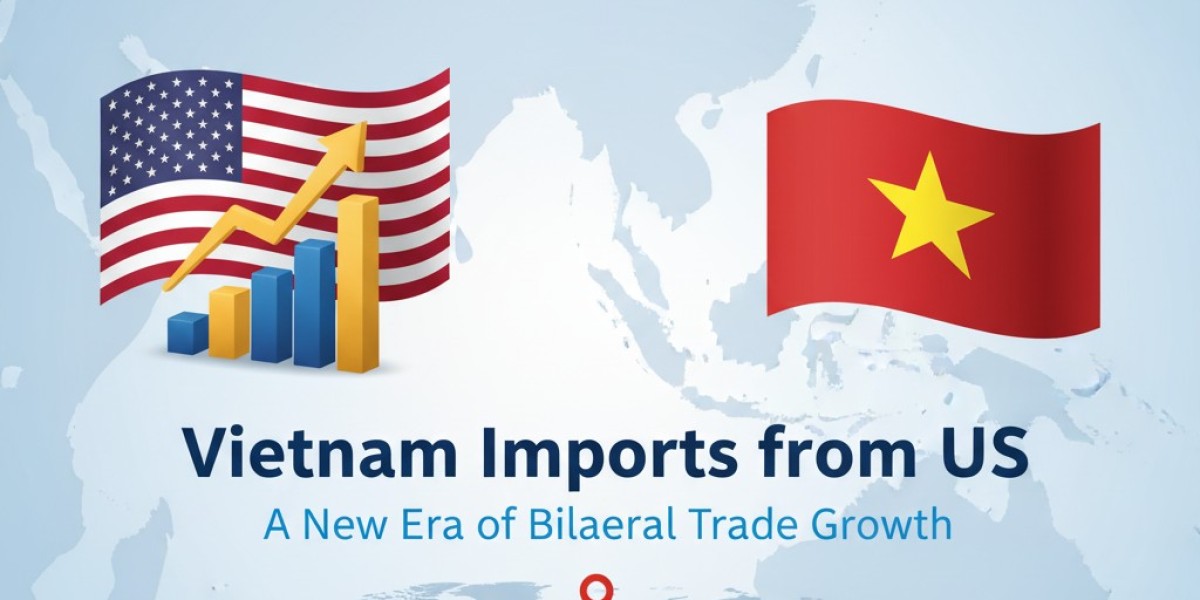The year 2024–25 has marked a turning point in the economic relationship between Vietnam and the United States. Trade between the two nations has reached historic levels, making Vietnam the seventh-largest trading partner of the U.S. while the United States has emerged as Vietnam’s largest export destination. According to the latest Vietnam import customs data, the total value of Vietnam imports from US reached $14.98 billion in 2024, representing an impressive 33% increase from the previous year.
This upward trend underscores the growing interdependence between the two economies. However, while U.S. exports to Vietnam continue to grow, the trade balance remains heavily in Vietnam’s favor, with U.S. imports from Vietnam reaching $136.6 billion in 2024. This imbalance has sparked political discussions in Washington and prompted the creation of the 2025 U.S.–Vietnam Trade Framework, aimed at promoting more reciprocal trade relations.
Understanding Vietnam Imports from US: What Drives the Growth?
The diversity and sophistication of Vietnam imports from US reflect the country’s economic transformation. Once primarily focused on low-cost manufacturing and assembly, Vietnam now imports high-value machinery, technology, and agricultural goods from the United States to fuel its industrial and export-driven growth.
According to Vietnam import customs data, the top categories of goods imported from the U.S. in 2024–25 include:
Electrical Machinery & Equipment (HS Code 85) – worth $4.54 billion
These imports include semiconductors, integrated circuits, power generators, and telecommunication systems. As Vietnam develops its electronics and semiconductor assembly industries, the demand for high-quality U.S. equipment is accelerating.Prepared Animal Food (HS Code 23) – $1.01 billion
Vietnam’s livestock and aquaculture industries rely heavily on U.S. feed products, including soy-based protein and supplements.Plastics & Articles Thereof (HS Code 39) – $1 billion
Used widely in packaging and manufacturing, plastics from the U.S. support Vietnam’s growing consumer goods and industrial sectors.Cotton (HS Code 52) – $681.59 million
The U.S. remains one of Vietnam’s top cotton suppliers, feeding its massive textile and garment export industry.Pharmaceuticals, Chemicals & Medical Devices – combined $1.6 billion
Vietnam continues to import high-quality medical and pharmaceutical products from U.S. manufacturers such as Abbott, GE Healthcare, and Medtronic.
In short, the composition of Vietnam imports from US has shifted toward high-value, technology-intensive, and industrial goods, aligning with Vietnam’s long-term vision of becoming a manufacturing and innovation hub.
What Does Vietnam Import from the US?
When we explore what does Vietnam import from the US, the answer extends far beyond traditional agricultural products. Vietnam’s industrial evolution has diversified its import portfolio. Besides electrical machinery and cotton, the U.S. also exports aerospace components, renewable energy equipment, and advanced manufacturing tools to Vietnam.
Notably, medical instruments and optical devices are gaining importance as Vietnam upgrades its healthcare infrastructure. Meanwhile, oil seeds, soybeans, and animal feed continue to make up a large share of U.S. exports to Vietnam, highlighting the strength of the American agricultural sector in Asian markets.
The Vietnam import customs data for 2024–25 further illustrates this shift: industrial machinery, plastics, and electrical equipment together make up nearly 60% of Vietnam’s total imports from the U.S..
What Does the US Import from Vietnam?
The trade relationship between the two nations, however, remains asymmetrical. When it comes to what does the US import from Vietnam, the balance is significantly tilted toward Vietnamese exports. The United States is the largest buyer of Vietnam exports, which include:
Textiles and garments
Electronics and electrical components
Footwear and furniture
Seafood, coffee, and agricultural products
According to Vietnam export customs data, U.S. imports from Vietnam reached $136.6 billion in 2024, up nearly 19% from the previous year. This massive export volume accounts for about one-third of Vietnam’s total exports, underscoring Vietnam’s economic dependence on American consumer demand.
The 2025 U.S.–Vietnam Trade Framework: A Game-Changer
In late 2025, both nations signed the Framework Agreement on Reciprocal, Fair, and Balanced Trade, signaling a new chapter in their economic partnership. The framework was introduced following the U.S. decision to impose a 20% tariff on most Vietnamese goods entering its market.
However, the agreement also contains significant benefits for both sides:
Vietnam will reduce tariffs on nearly all U.S. goods, particularly agricultural and industrial products.
U.S. exporters will gain easier access to Vietnam’s markets through harmonized standards and faster licensing procedures.
Digital trade provisions ensure cross-border data flows and eliminate customs duties on electronic transmissions.
For American businesses, this framework opens opportunities in agriculture, healthcare, industrial machinery, and digital services. For Vietnam, it offers access to advanced U.S. technologies and diversification away from overreliance on China.
Vietnam Imports from US: Historical Growth and Future Potential
The growth trajectory of Vietnam imports from US has been steady over the past decade. According to the Vietnam import customs data, imports rose from $6.28 billion in 2014 to nearly $15 billion in 2024. The early months of 2025 already show strong momentum, with imports reaching $7.5 billion in just two quarters—a 21% year-on-year increase.
This rise has been particularly noticeable in key sectors:
Cotton imports surged by 79% in value, with the U.S. supplying almost half of Vietnam’s total cotton demand.
Wood imports jumped by 52% after Vietnam cut tariffs to 0% in April 2025.
U.S. fruit and food imports grew 43% year-on-year, driven by consumer demand for premium food products.
These figures highlight that Vietnam’s import demand from the U.S. is no longer limited to raw commodities. Instead, the focus is shifting toward high-tech equipment, machinery, and premium consumer goods, marking a maturing trade relationship.
Vietnam Exports and Imports: A Balanced Perspective
While Vietnam continues to enjoy a strong export surplus with the U.S., policymakers in both countries recognize the need for a more balanced trade relationship. For Vietnam, increasing imports from the U.S. is not just about numbers—it’s about upgrading quality, standards, and technology.
Meanwhile, American exporters see Vietnam as one of the most promising emerging markets in Asia. As Vietnam exports more finished goods to the U.S., it also imports essential inputs—machinery, chemicals, and high-tech components—from American suppliers to sustain production growth.
The Road Ahead: Opportunities and Challenges
Despite optimistic projections, there are challenges ahead. High logistics costs, regulatory barriers, and strong price competition from Asian suppliers remain hurdles for American exporters. Nevertheless, the new trade framework addresses many of these pain points through:
Tariff cuts on U.S. goods entering Vietnam (0–5%)
Recognition of U.S. technical and safety standards
Simplified import licensing and customs processes
If successfully implemented, Vietnam imports from US could double within the next five years, paving the way for deeper economic cooperation and supply chain integration.
Conclusion: Building a Strategic Trade Partnership
In conclusion, the evolving landscape of Vietnam imports from US signifies more than just trade—it’s about strategic alignment, technological advancement, and mutual growth. The 2025 U.S.–Vietnam Trade Framework is a cornerstone for a more balanced relationship, giving U.S. exporters greater market access while supporting Vietnam’s modernization goals.
For Vietnam, importing high-value U.S. goods—from semiconductors and machinery to agricultural and medical products—strengthens its position as a competitive and technologically advanced economy. For the United States, expanding exports to Vietnam helps rebalance trade and anchor American influence in Southeast Asia.
As both sides deepen cooperation, the question of what does Vietnam import from the US will continue to expand—covering not just goods but also innovation, expertise, and sustainable development partnerships.






